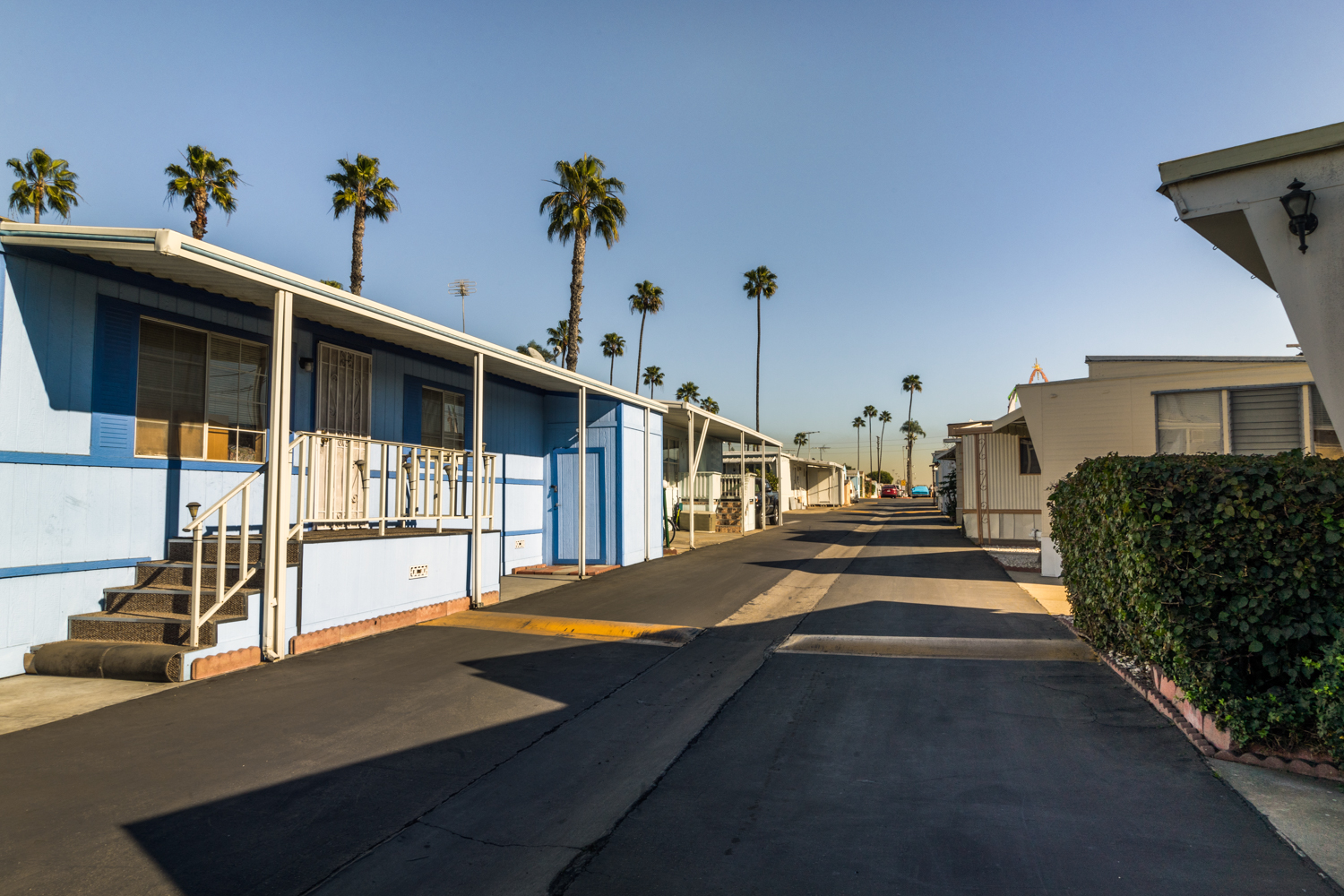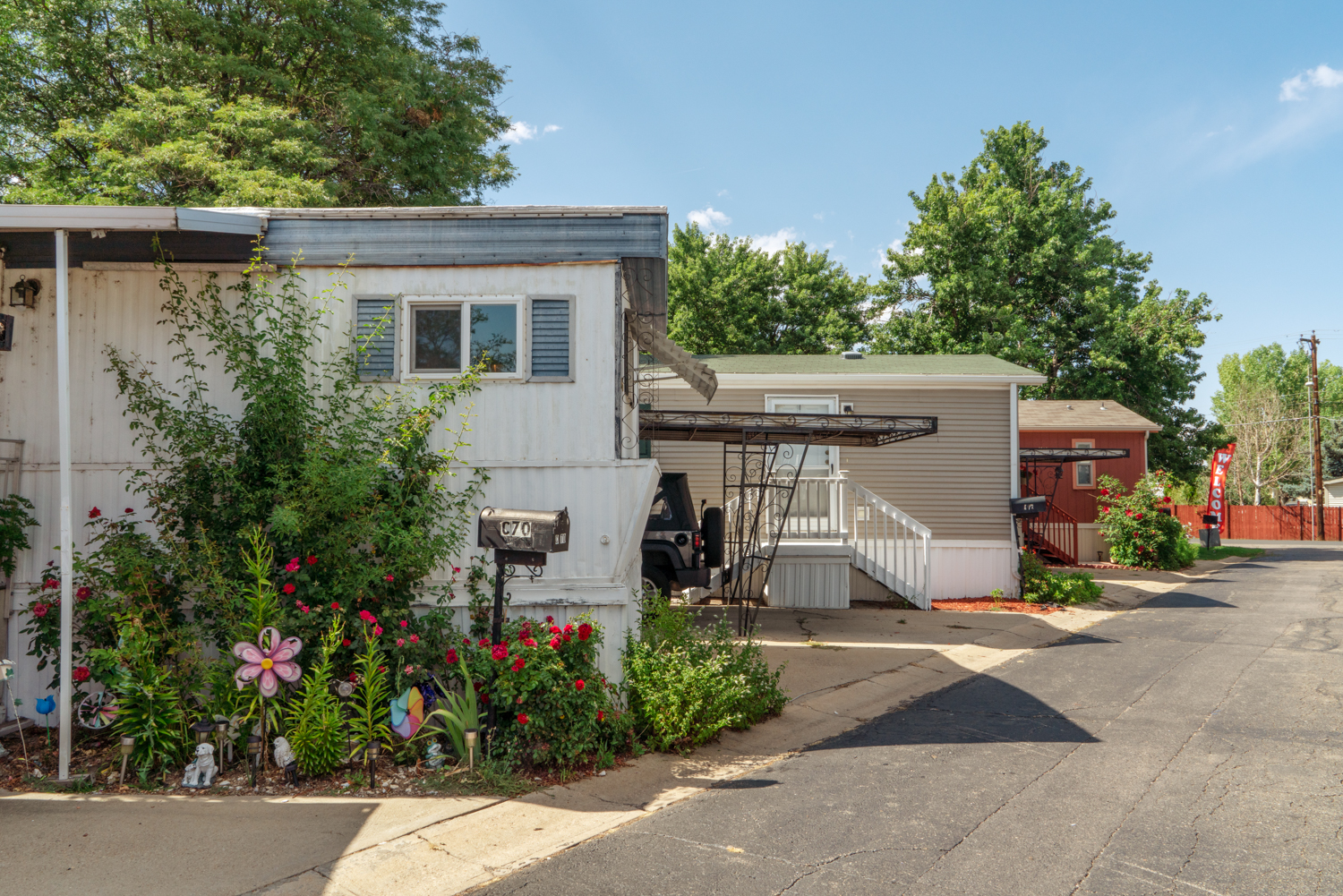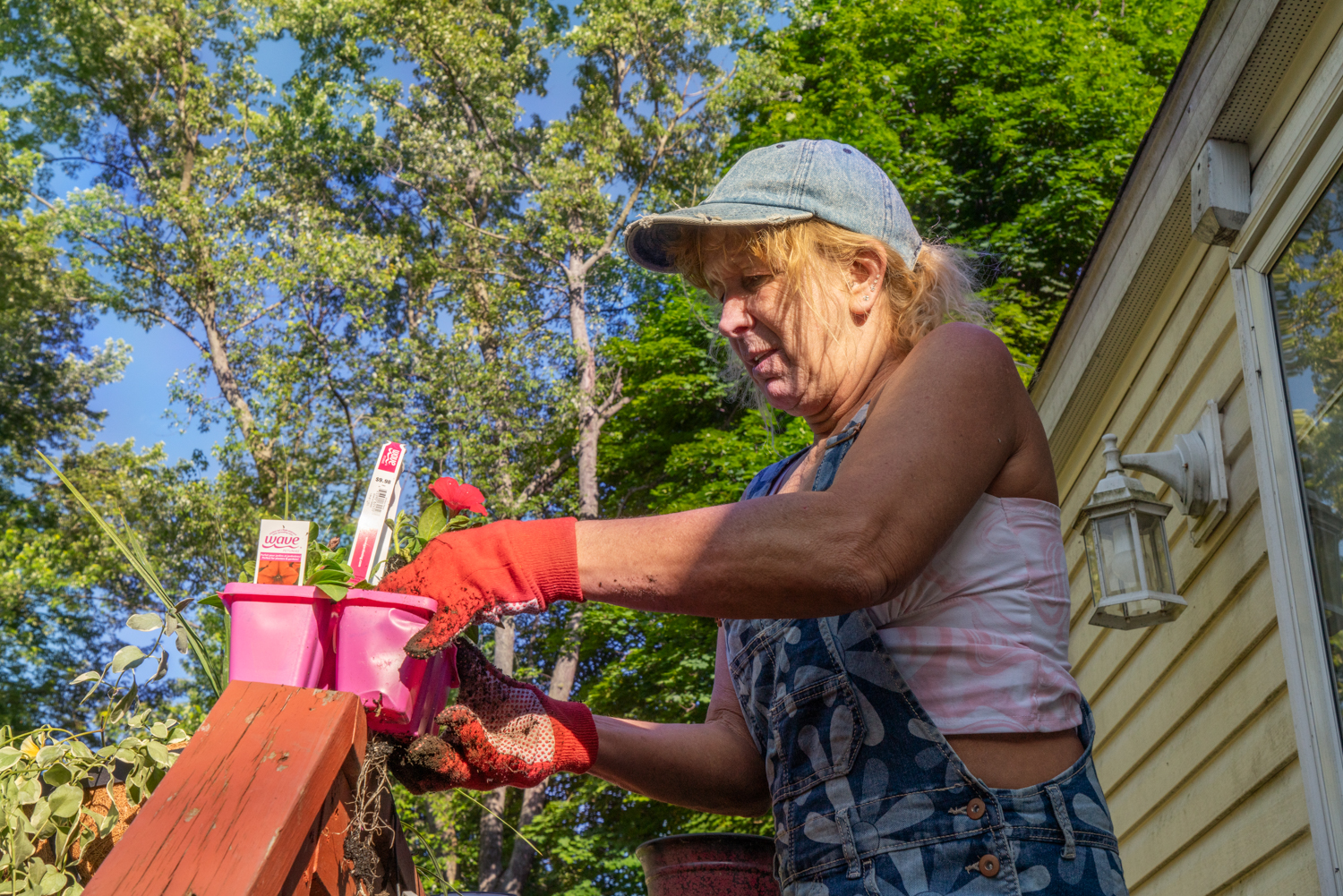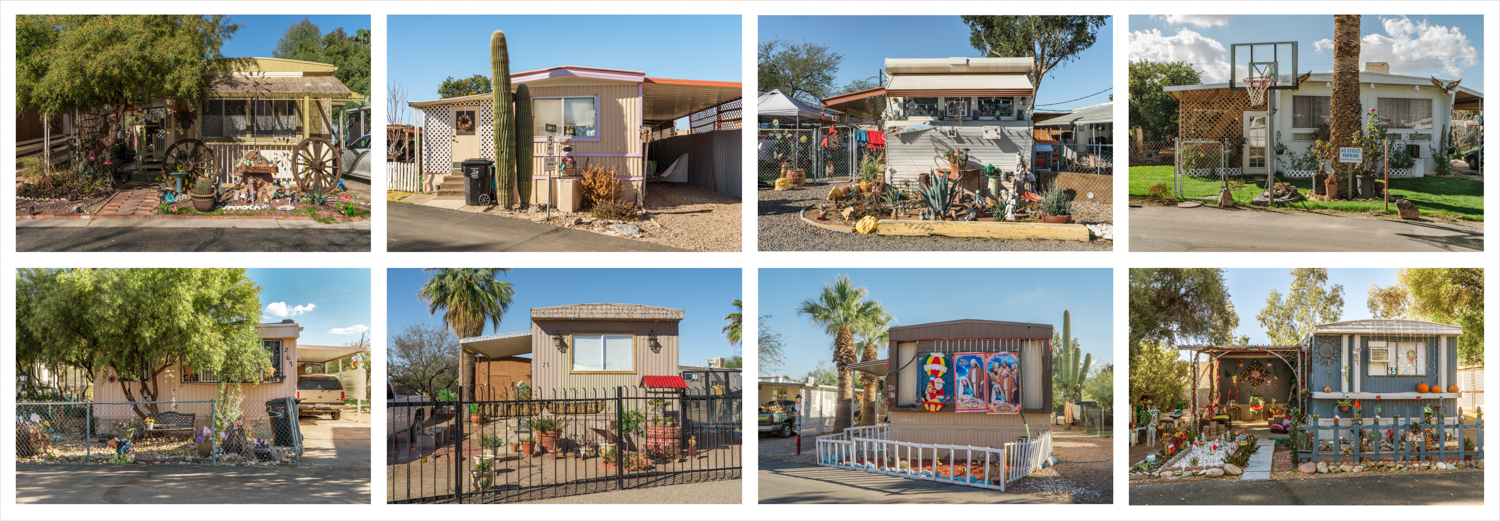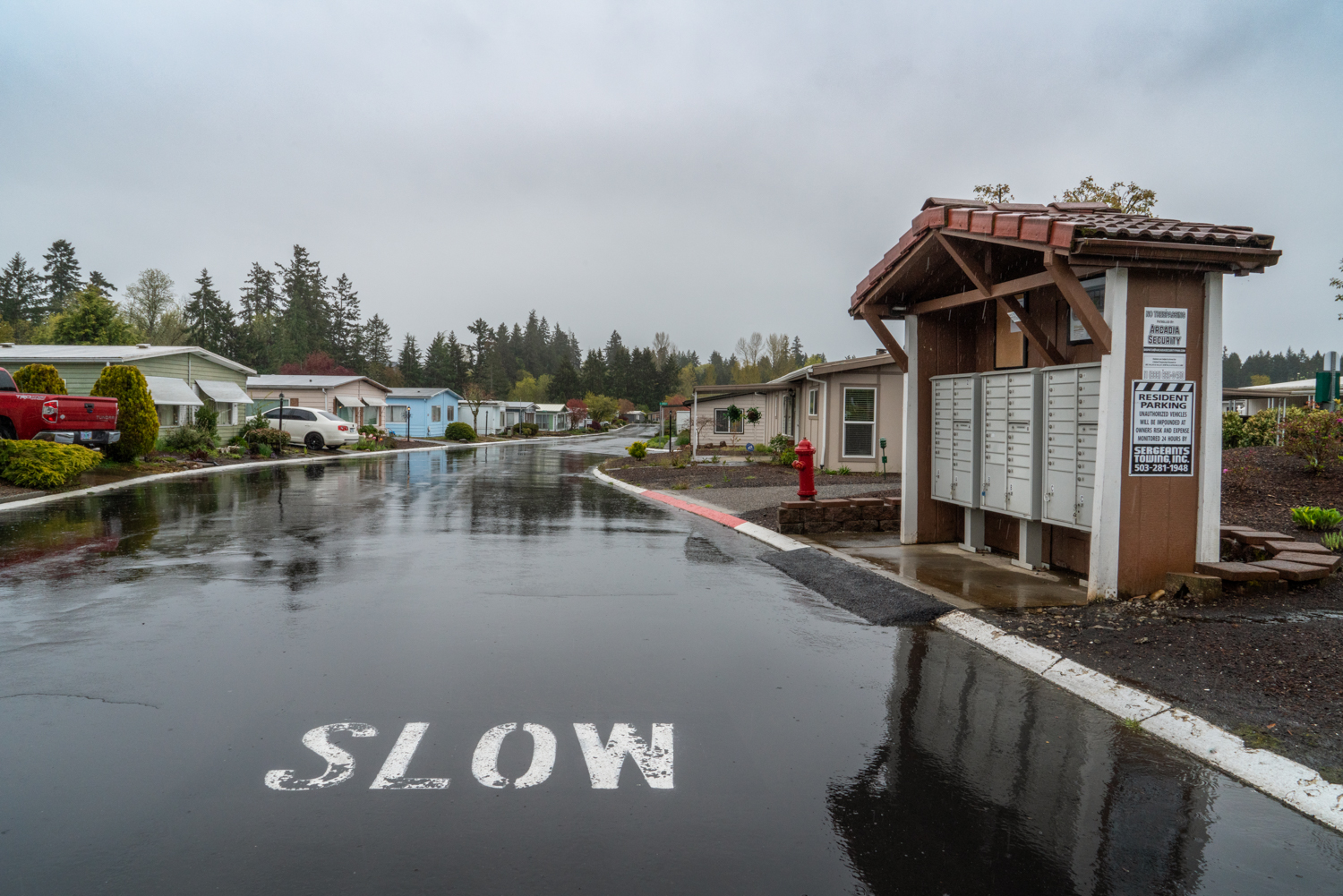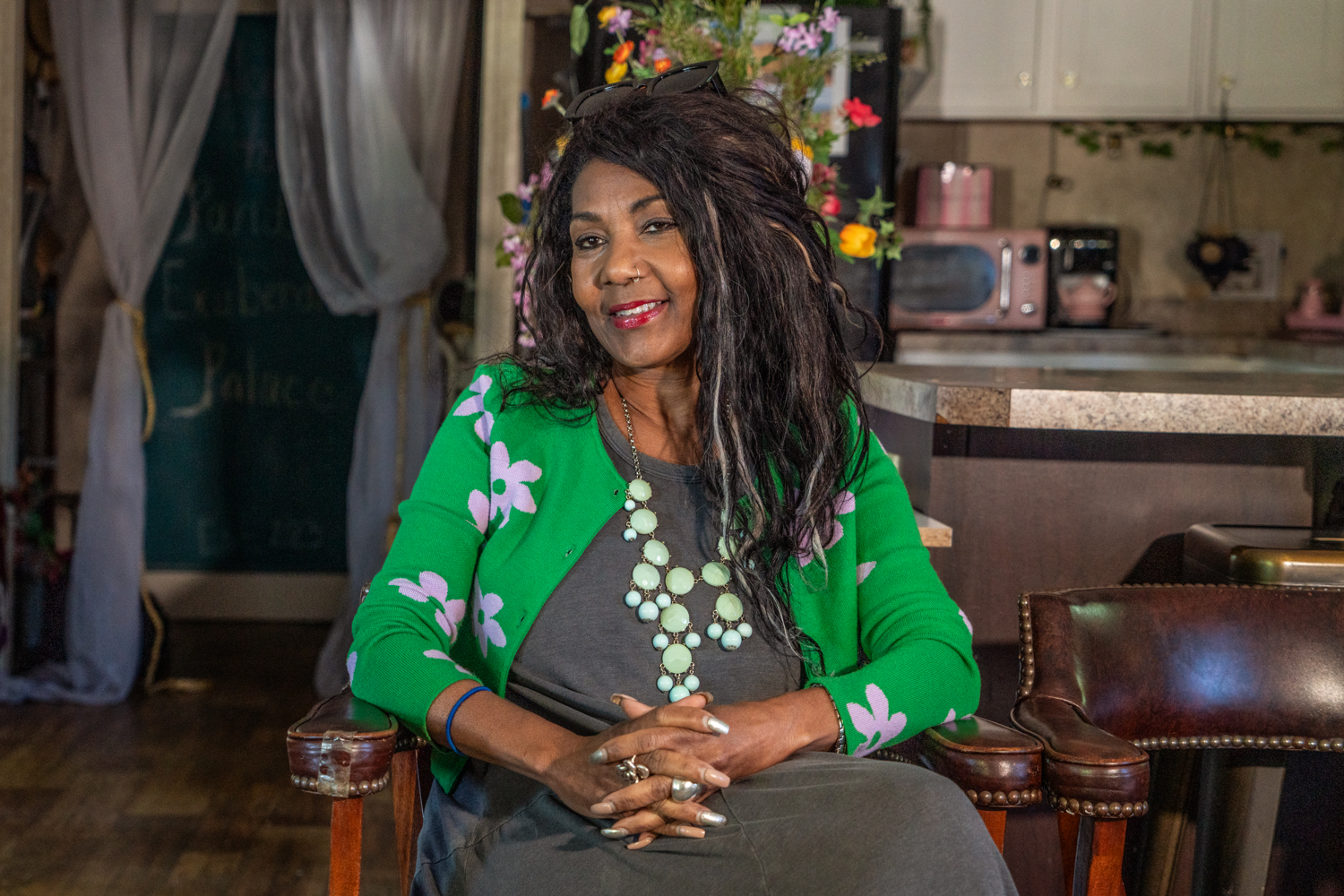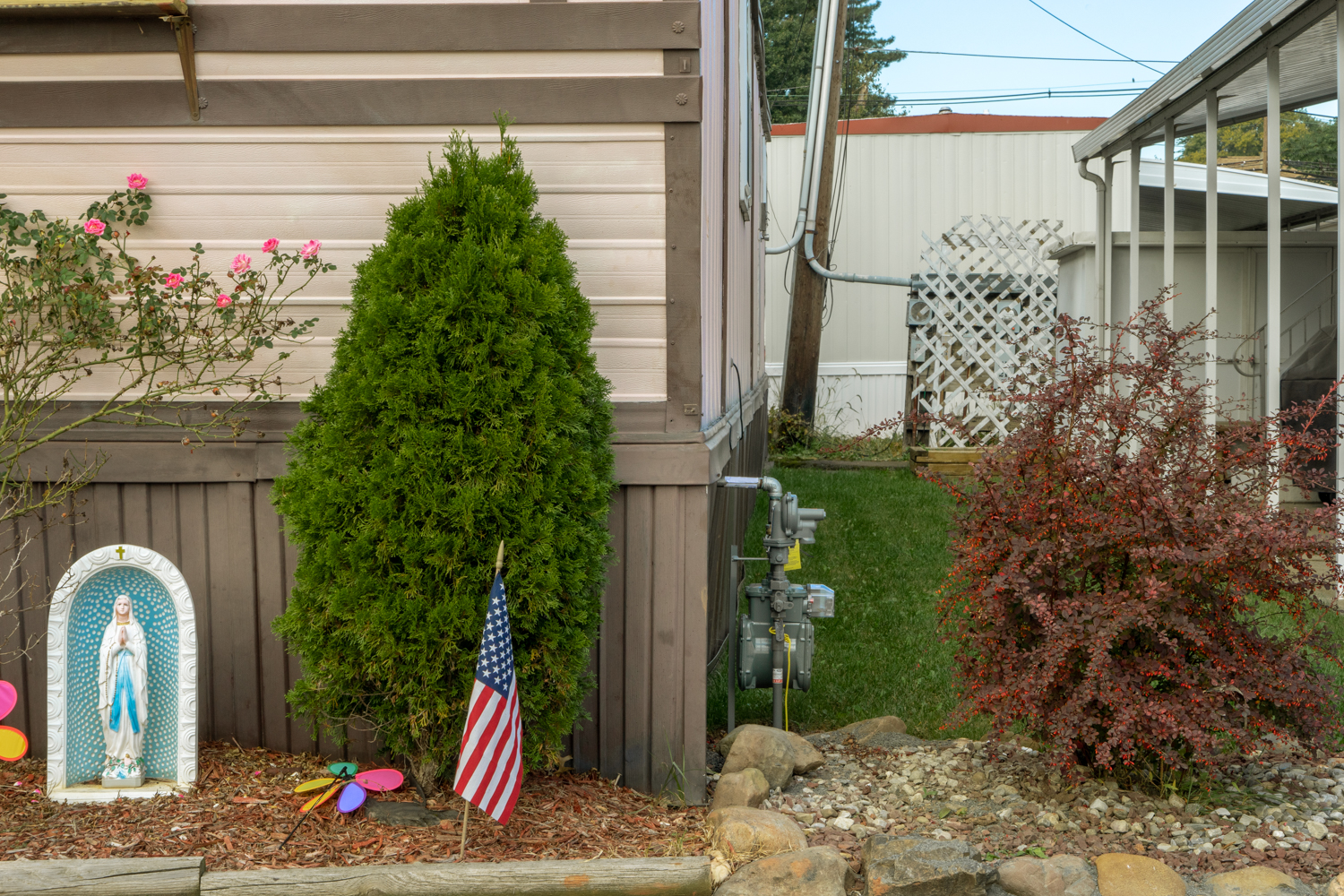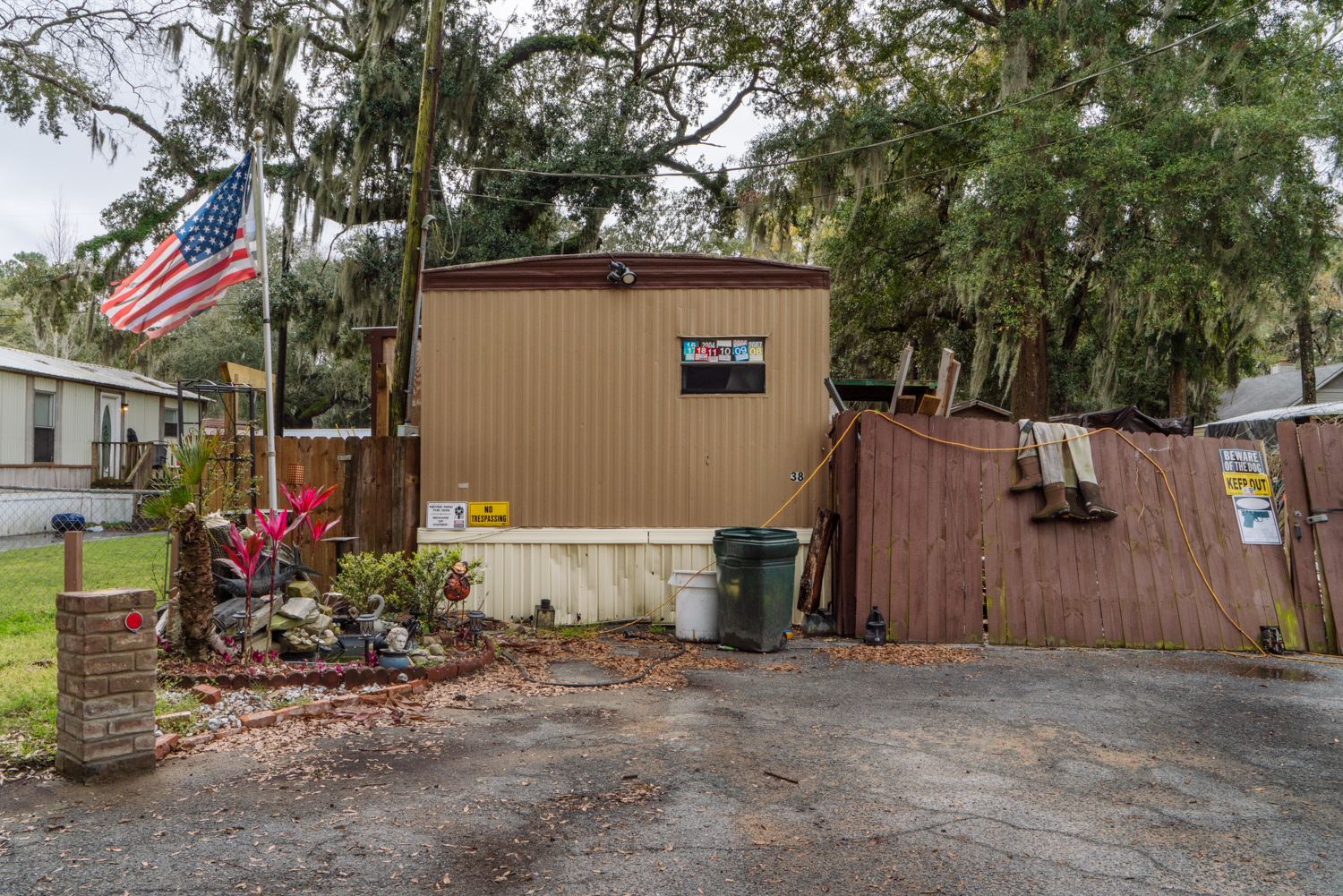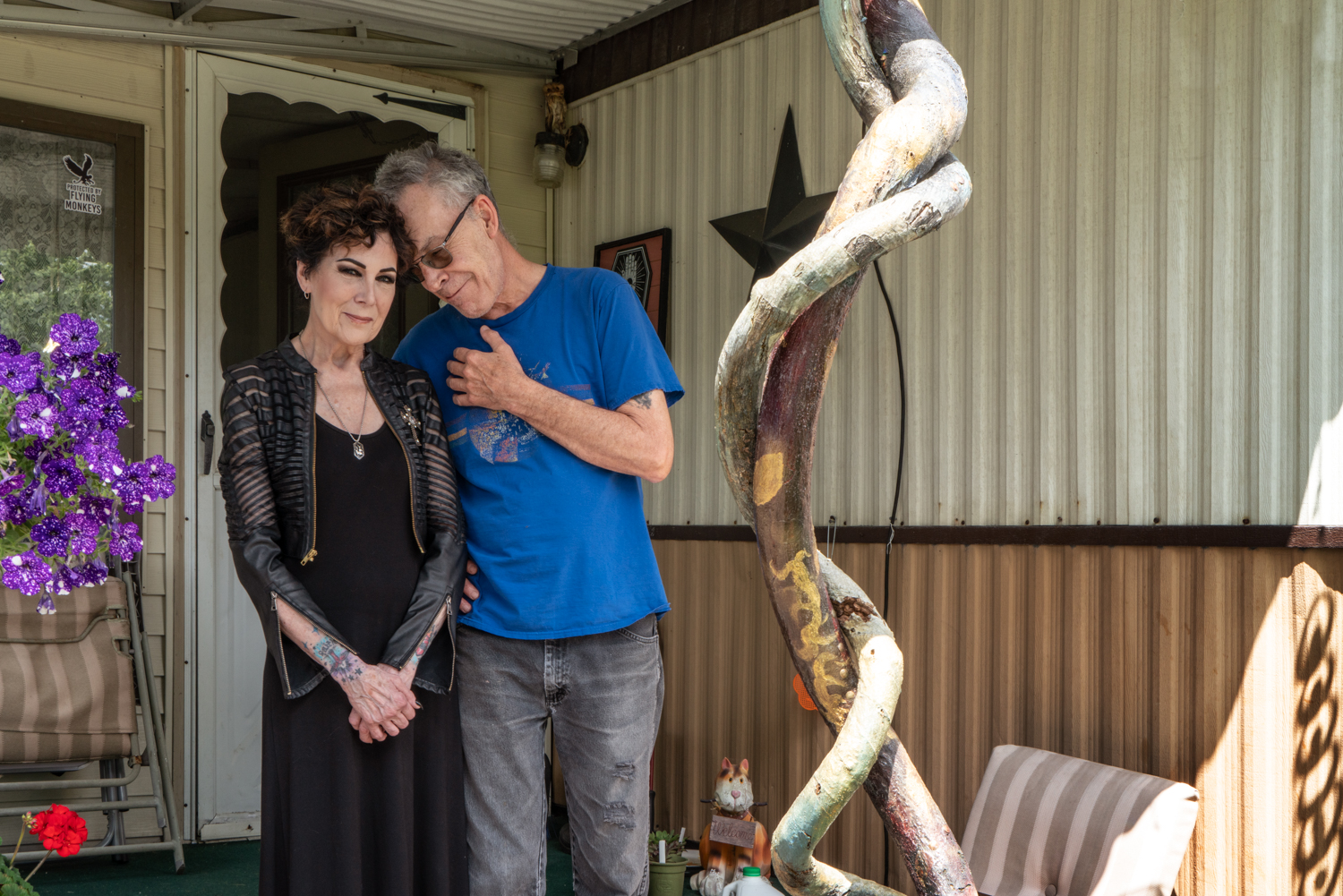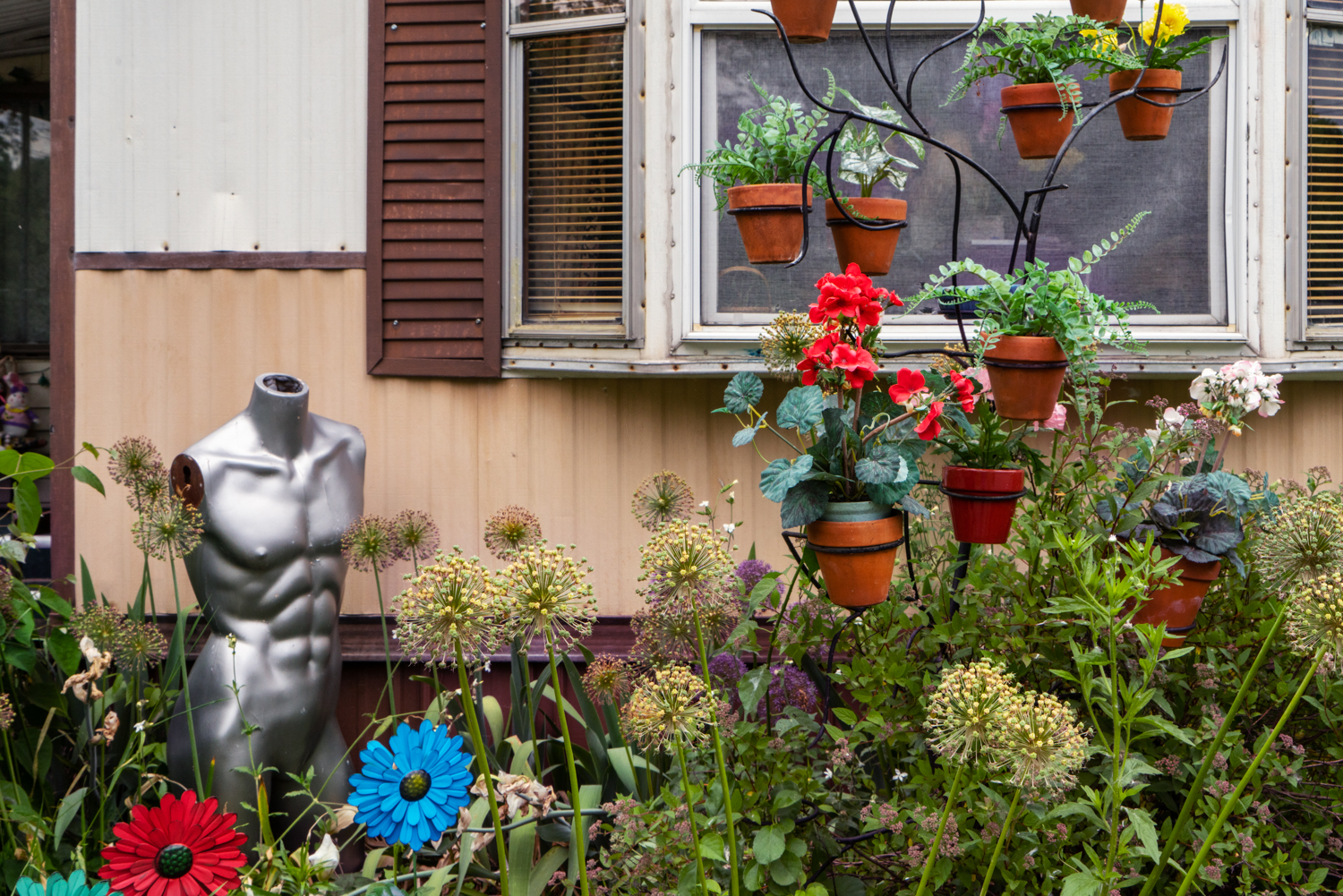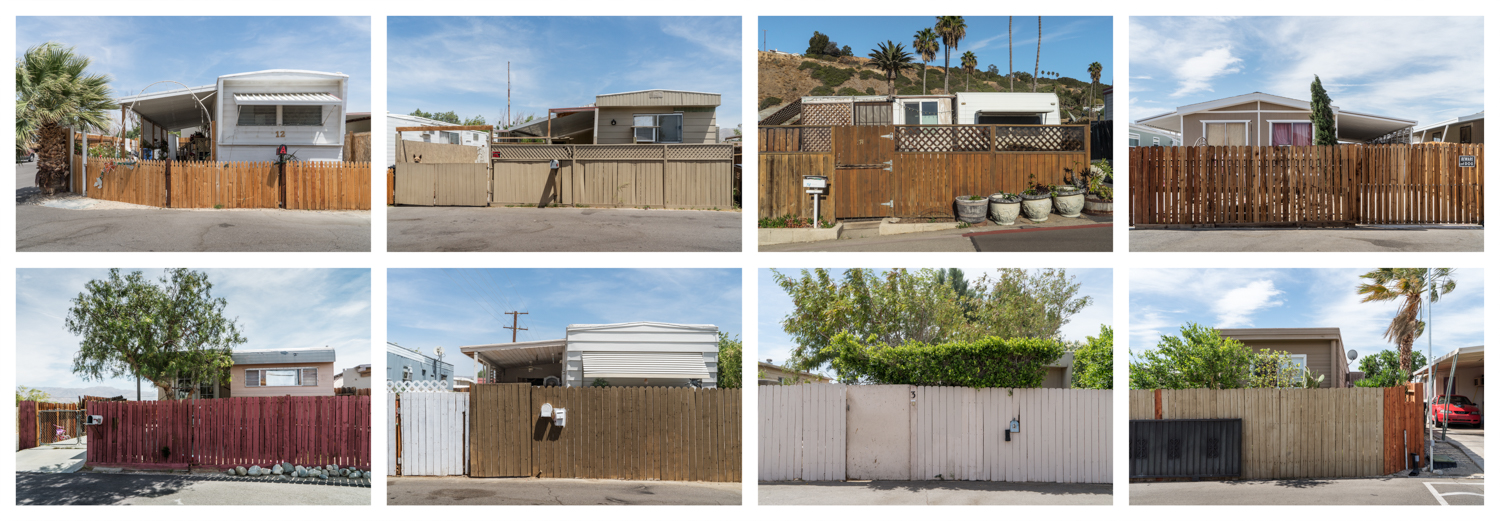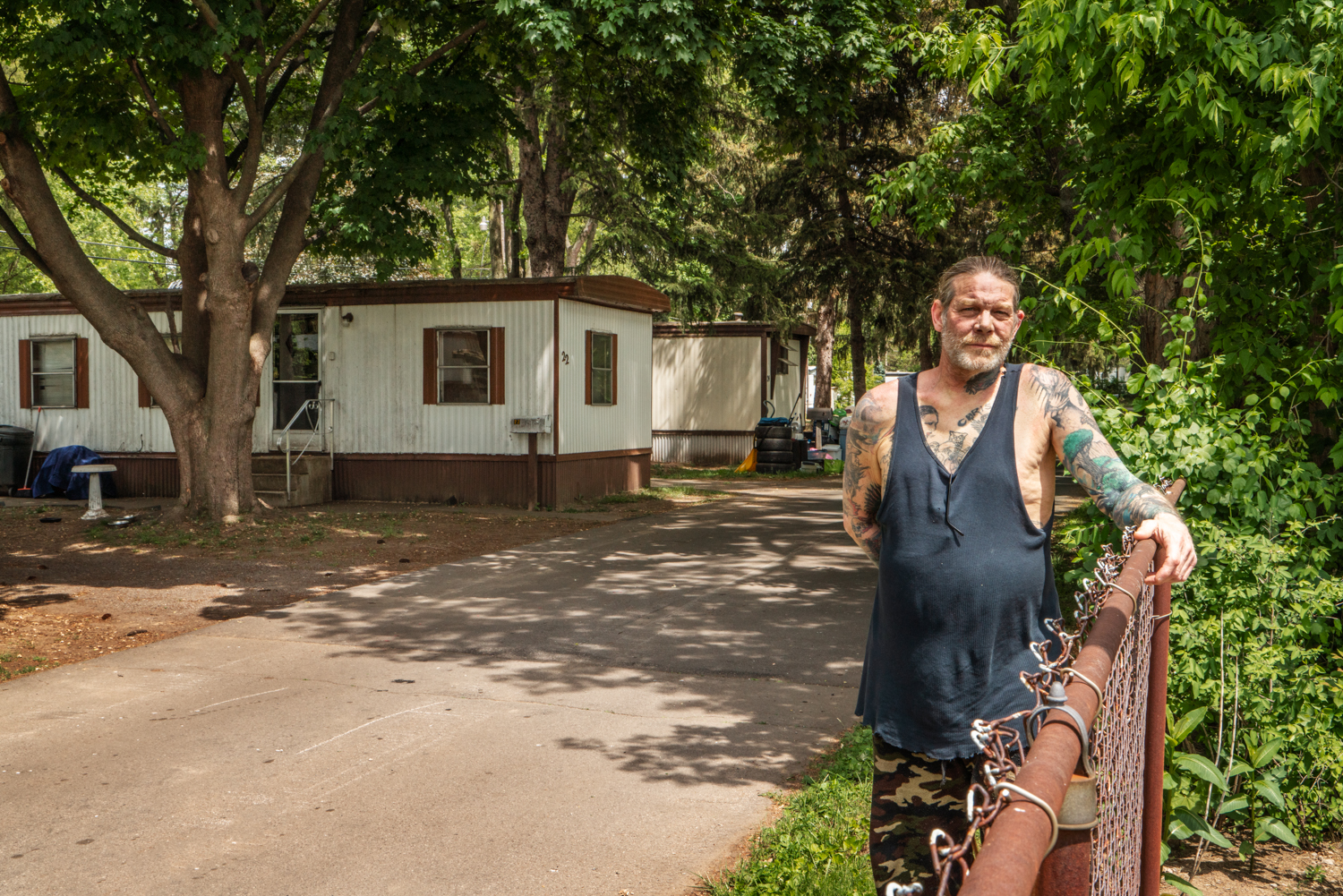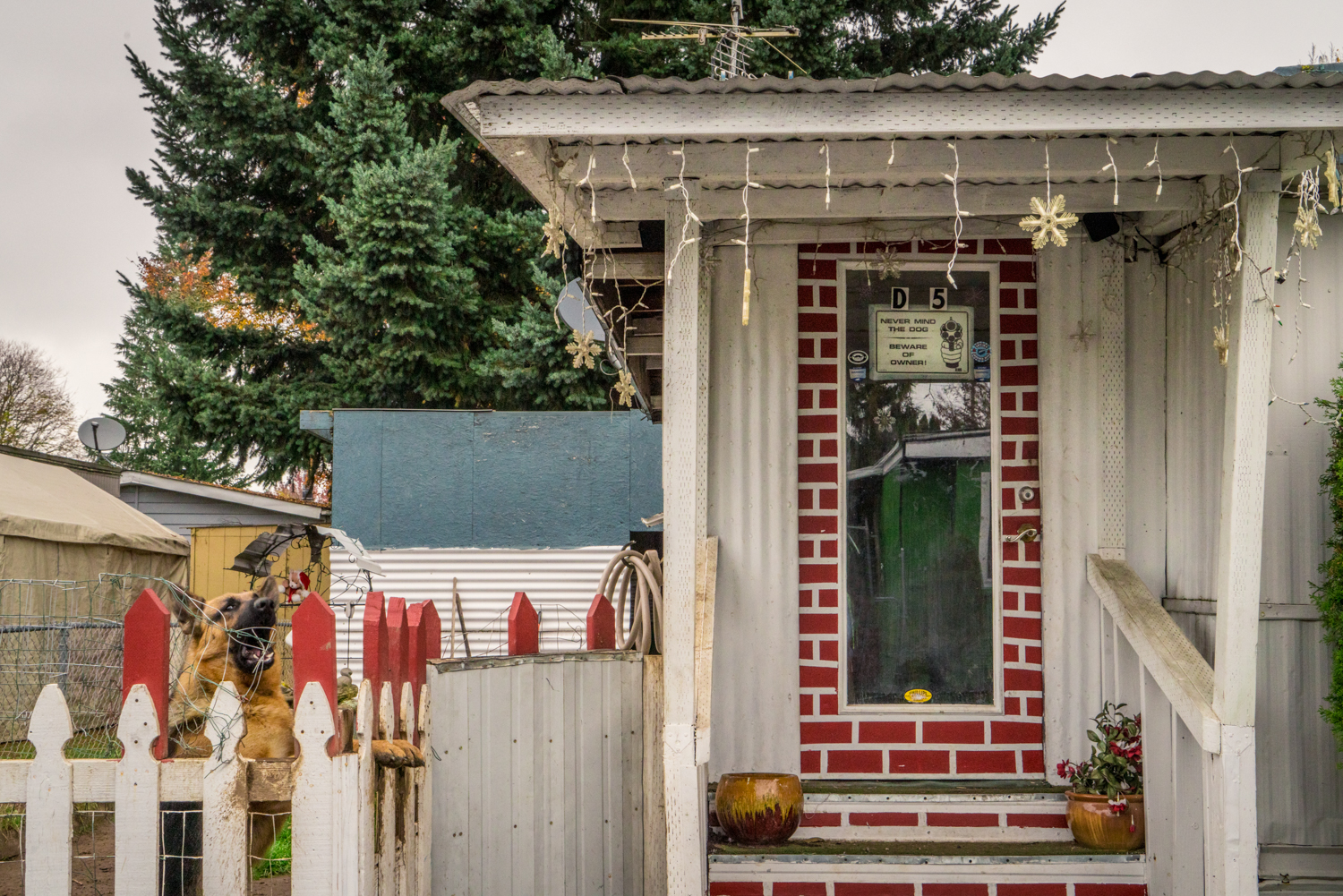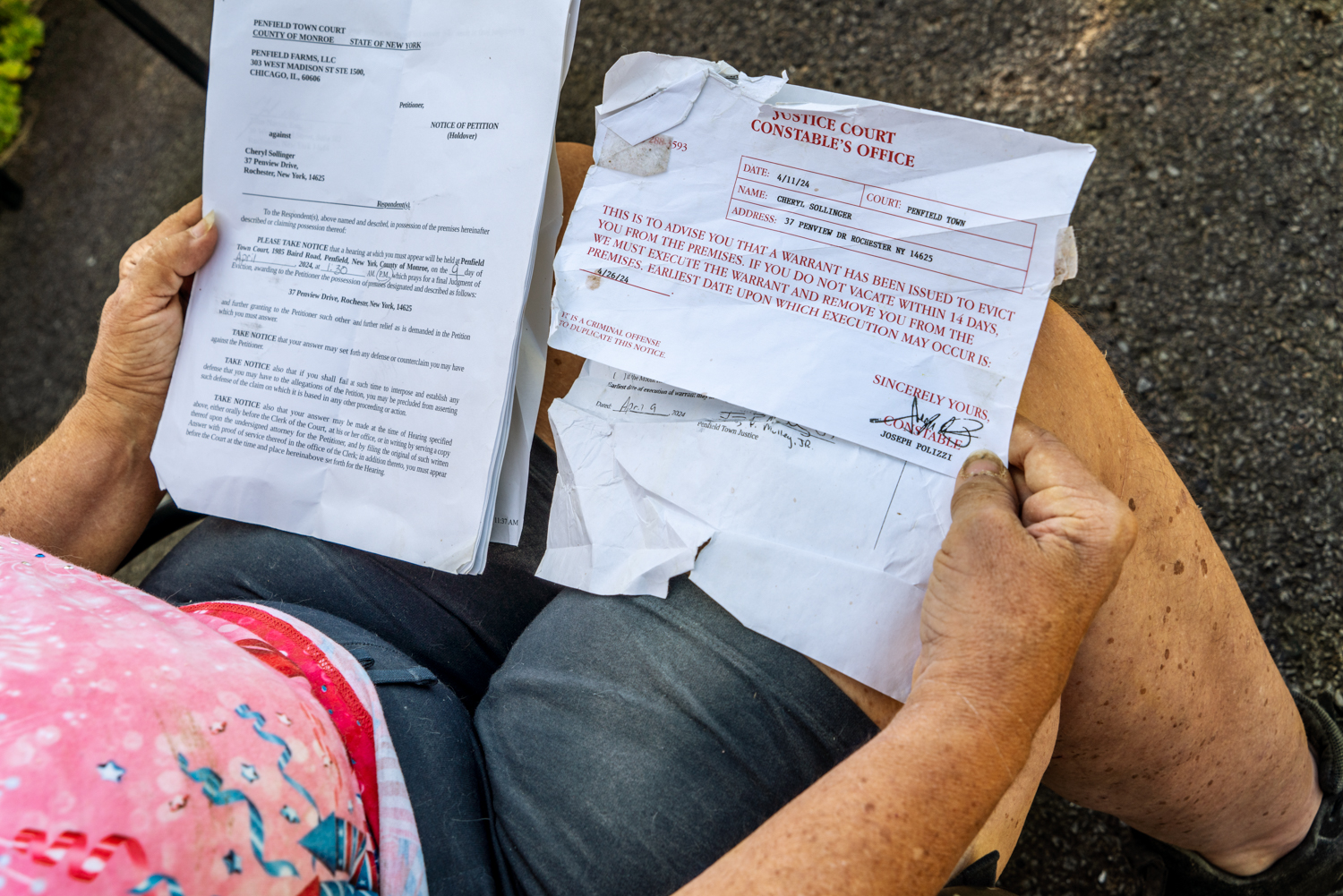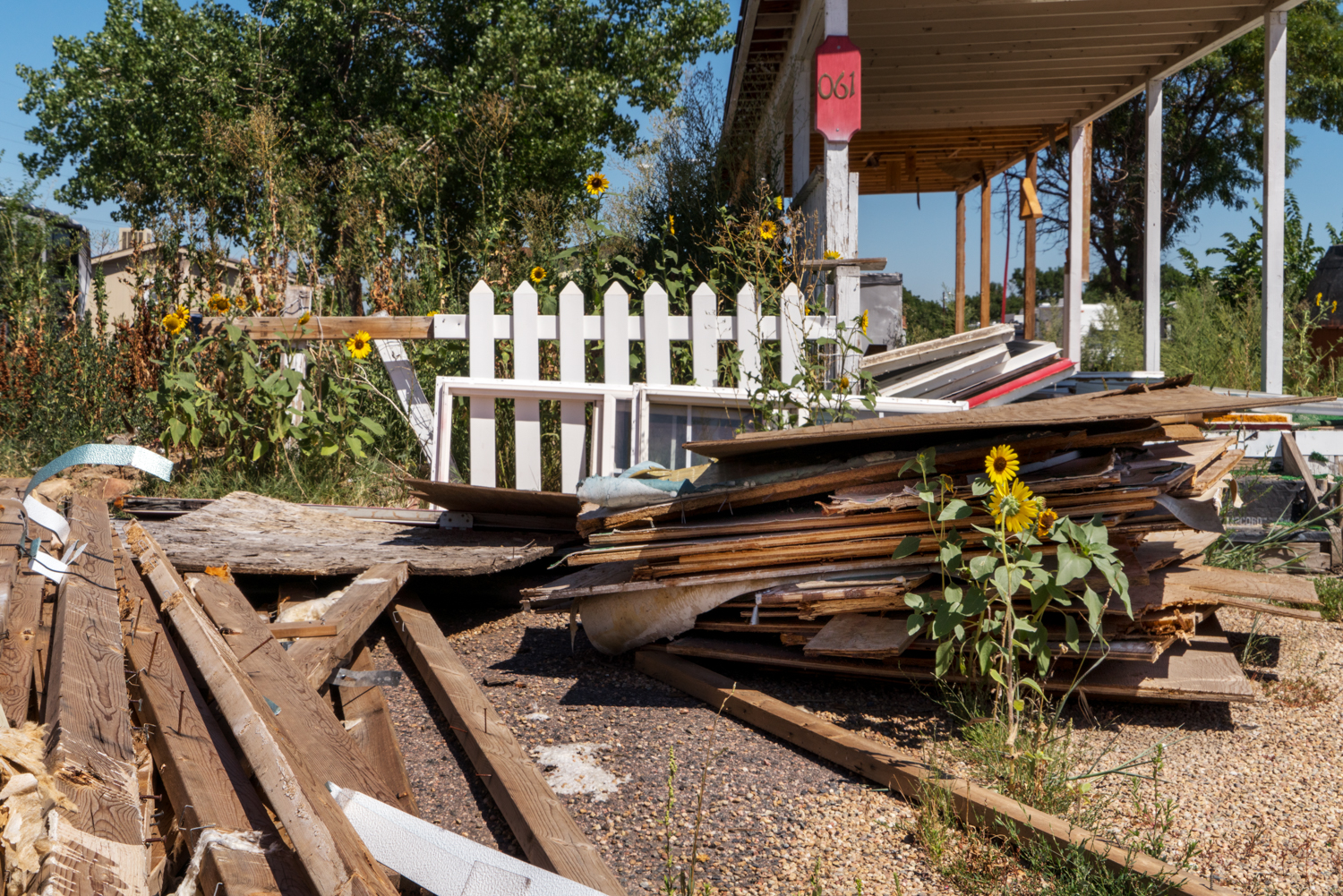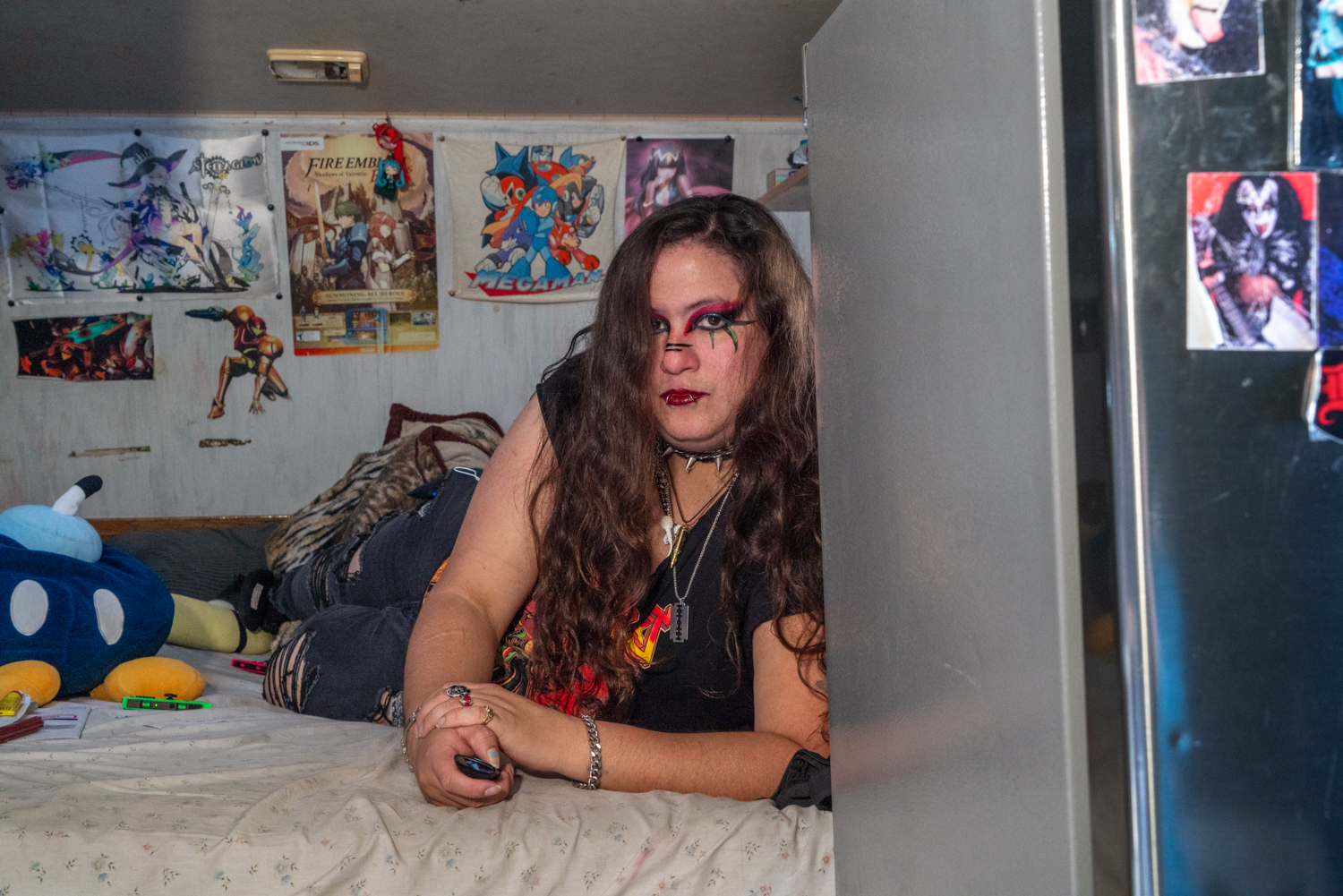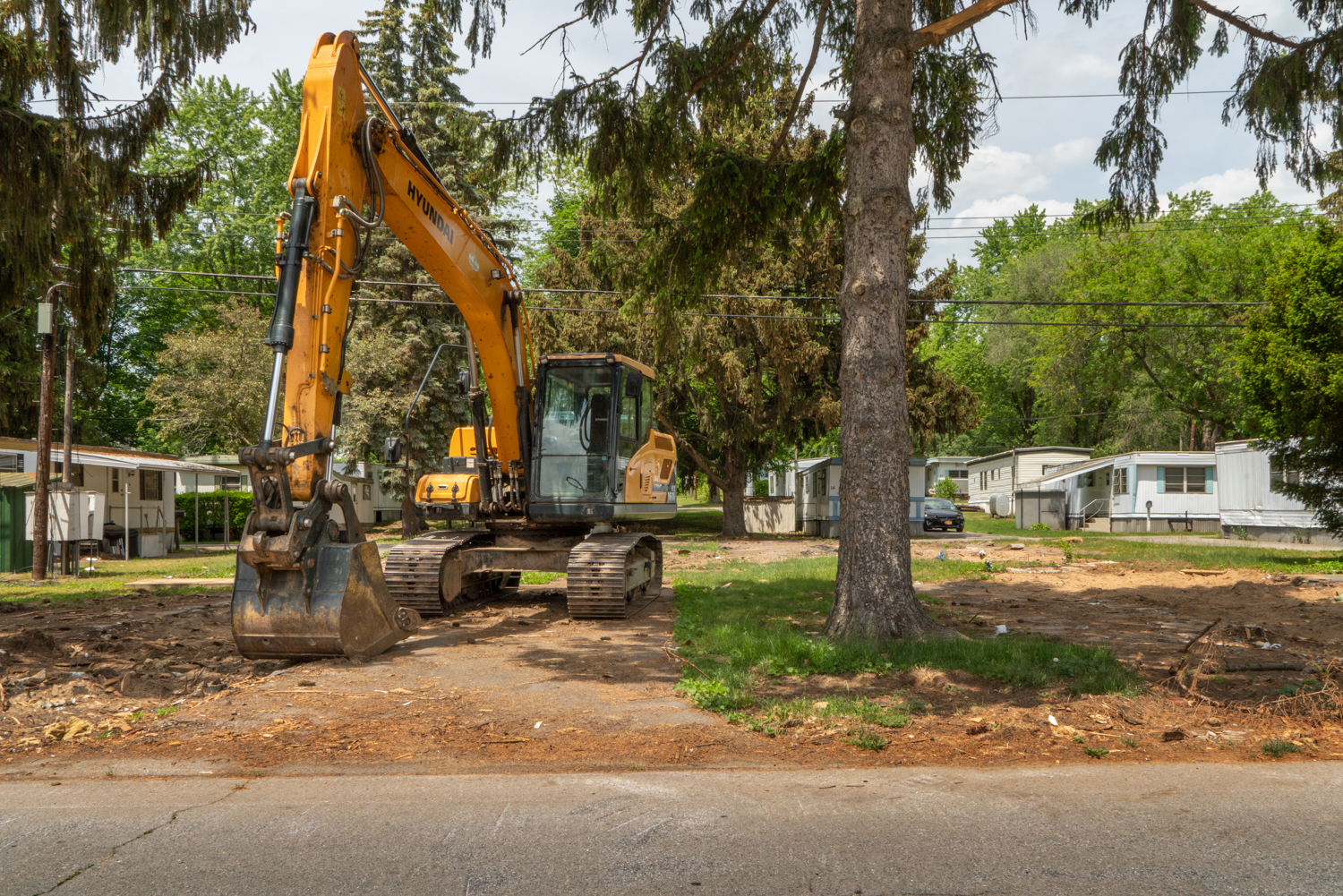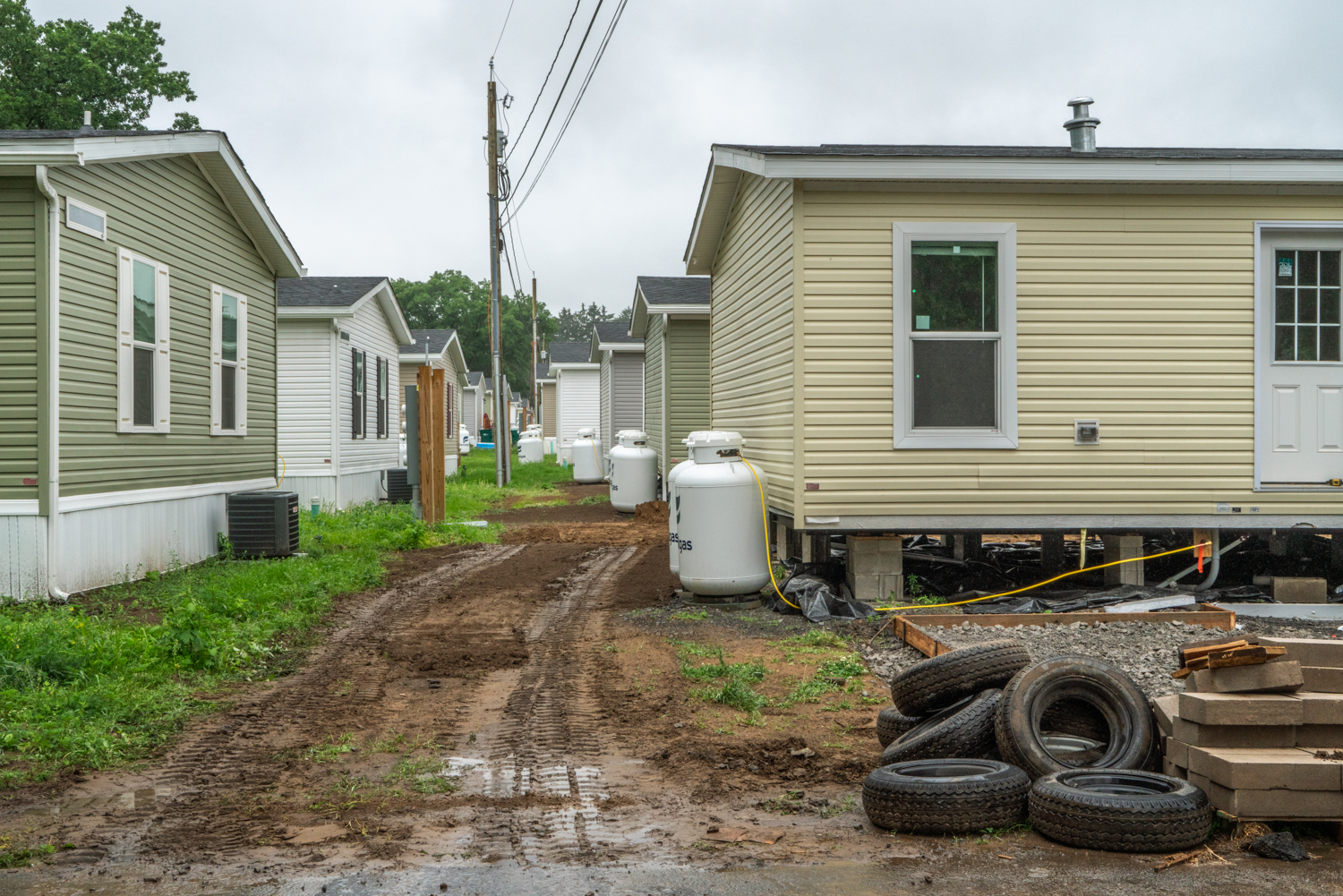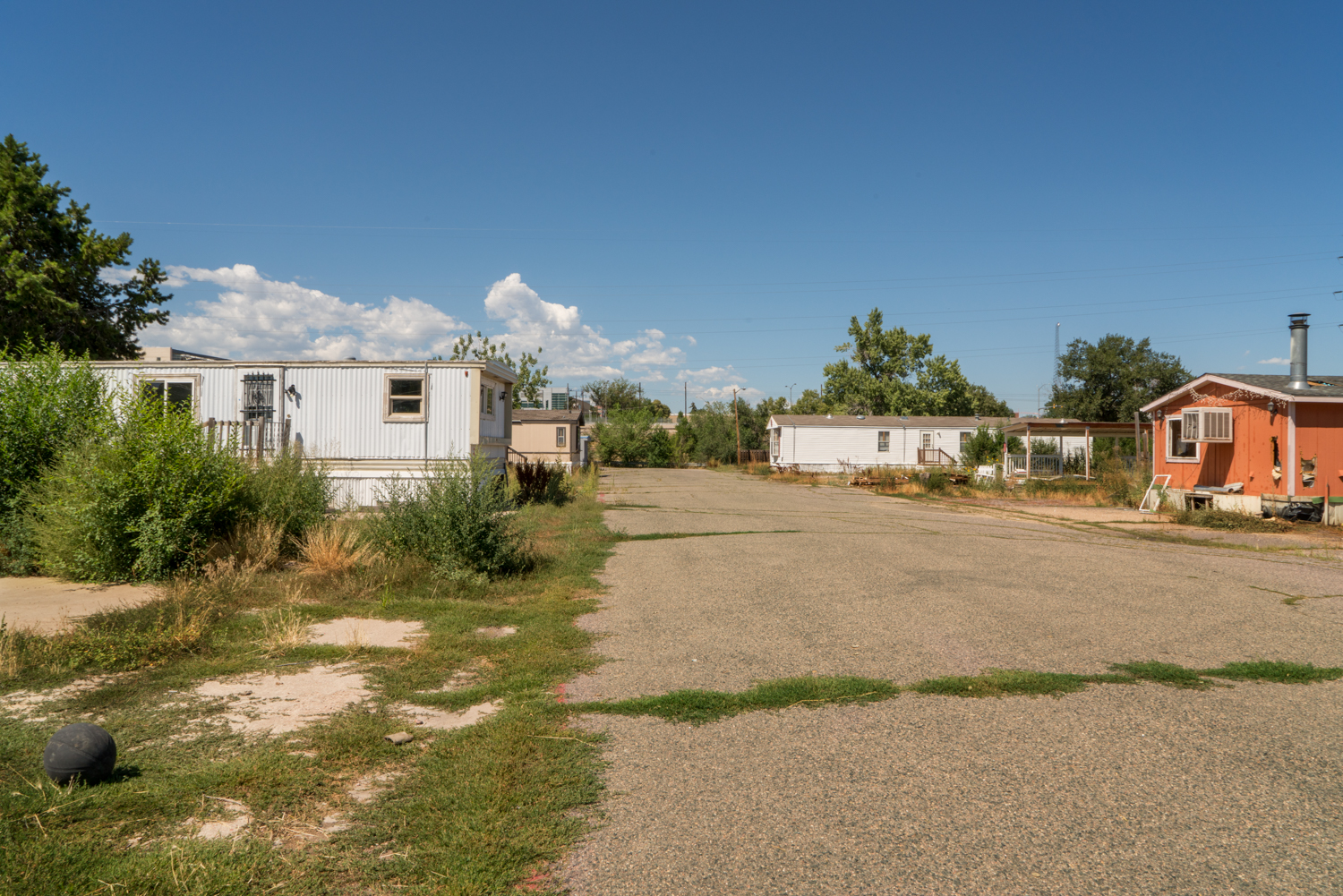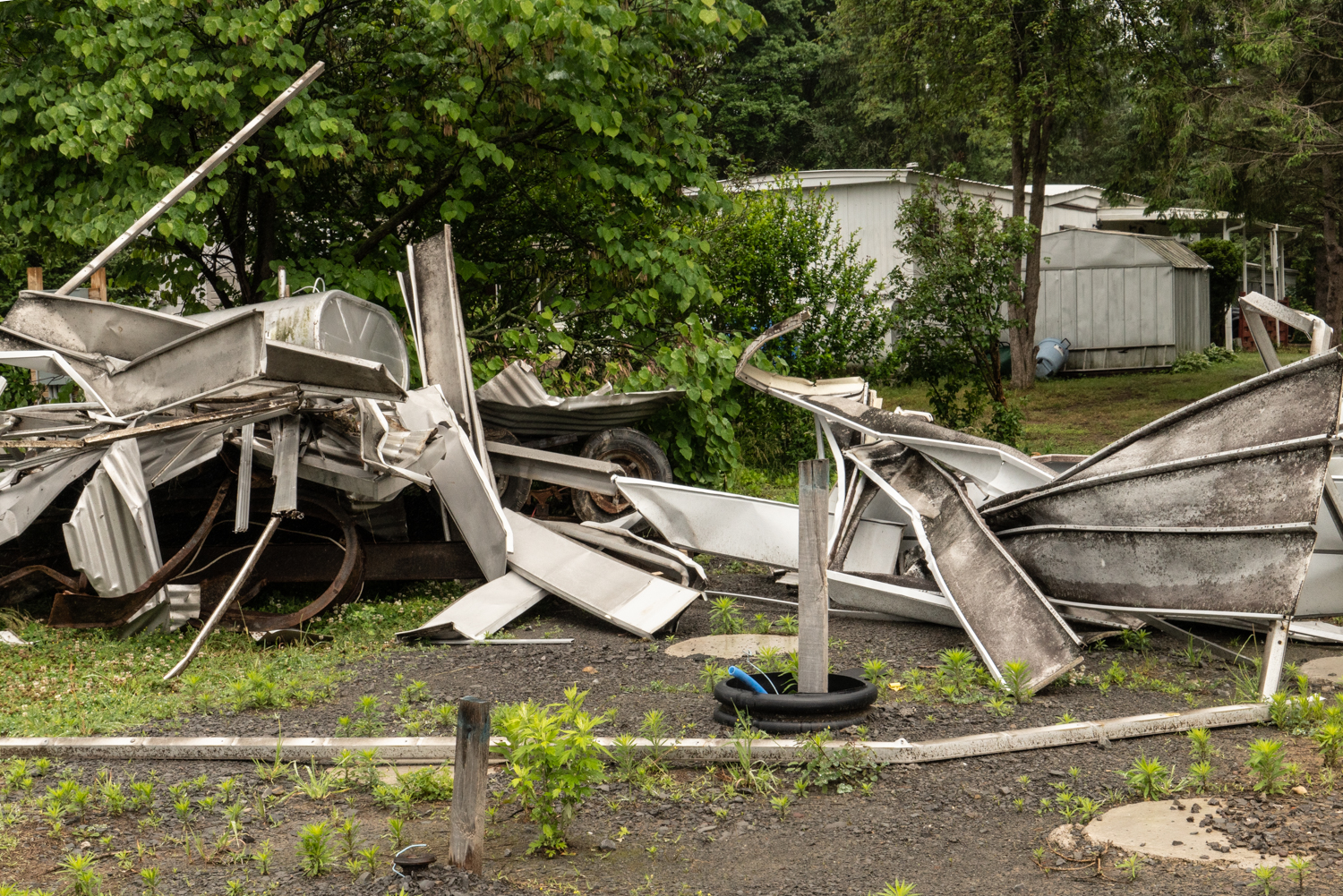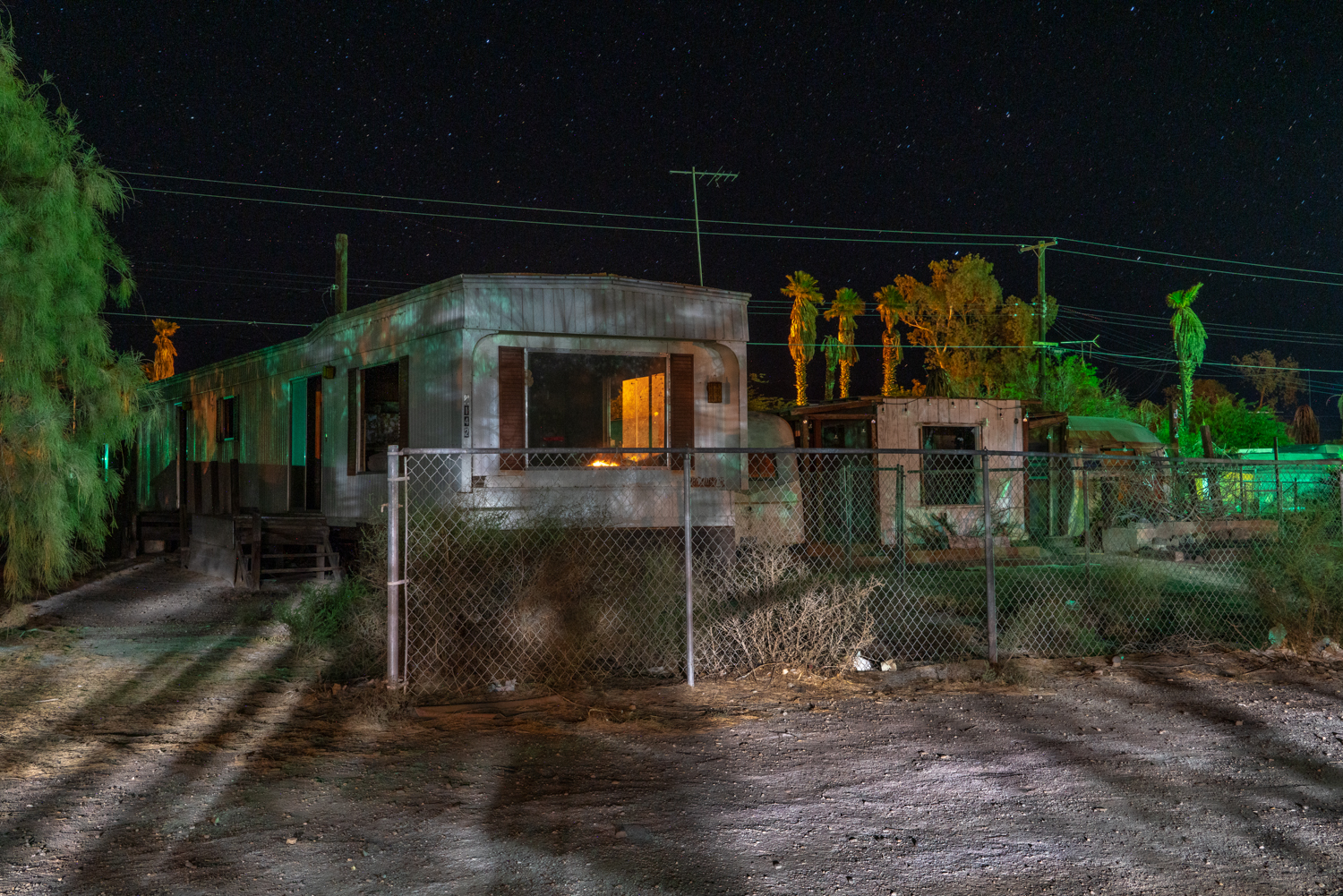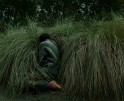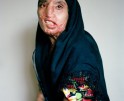Review Santa Fe: Kathleen Tunnell Handel: Where the Heart Is
Today, we are continuing to look at the work of artists from the 2024 Review Santa Fe portfolio review event. Up next, we have Where the Heart Is: Portraits from American Trailer and Mobile Home Parks by Kathleen Tunnell Handel. Kathleen and I originally met during the Atlanta Center for Photography portfolio reviews in early 2023, and reconnected at Review Santa Fe during the public portfolio walk.
Kathleen Tunnell Handel is a photographer, whose fine art aesthetic is grounded in the documentary tradition. Based between NYC and the Berkshires, MA, her long term work – Where the Heart Is: Portraits from American Trailer and Mobile Home Parks, focuses on the affordable housing subgenre of mobile home and manufactured housing communities. This researched based work includes photographic images and recordings from communities all over the United States. Her collaborative approach informs her growing advocacy for affordable housing.
Tunnell Handel’s earlier studies in observational and systems based life sciences at Cornell University, through her exploration of the visual arts and earning a BFA in Textile Design from the Rhode Island School of Design, to ongoing studies of photography, fine art printing, and bookmaking at the International Center of Photography, Maine Media, Santa Fe Workshops and others have all contributed to her deep interest in visual culture and themes of memory, life systems, time, and the human experience.
Follow Kathleen on Instagram: @kathleen_tunnellhandel
Where the Heart Is: Portraits from American Trailer and Mobile Home Parks
As the availability of affordable housing implodes, with eviction rates and financial instability surpassing crisis levels, my ongoing project – Where the Heart Is: Portraits from American Trailer and Mobile Home Parks investigates and advocates for this deeply impacted, primarily American housing form and its residents. This multimedia, spatial justice collaboration challenges the ingrained stereotyping of the estimated 22 million Americans who live in communities of manufactured homes (as stigmatized trailer and mobile homes are being rebranded), revealing and archiving what’s rapidly being lost in their communities, while amplifying resident’s and advocate’s voices.
My eye and heart are informed by impromptu conversations and videoed interviews with community residents from around the country, collaboration with professionals and scholars like Dr. Esther Sullivan – Sociologist, author, and advocate at UC Denver, and my affiliation with the national housing advocacy non-profit – MHAction (Manufactured Housing Action).
I’m especially drawn to photograph the yards and entryways around homes where individual choices in ornamentation and landscaping reveal the personalities of the unseen occupants and capture their notions of welcome, of beauty, and of home. Portraits of individual homes are also visually classified and constructed into a library of typology grids, archiving differences and commonalities within and across communities and states.
Expanding gentrification around many parks has increased the vulnerability of the essential workers, families, veterans, immigrants, and retiree residents, who rely on this largest, unsubsidized form of low-income housing. The lack of protective regulations make parks the target of equity investors, often leading to the loss of affordability for the leased site under residents’ self-owned homes, with subsequent harassment, eviction, and displacement.
Where the Heart Is was begun in 2017 with travels photographing within communities, to date, in Maine, New Jersey, California, Texas, Colorado, New York, Georgia, Oregon, and Arizona.
Recorded and edited video interviews of resident’s personal experiences from a number of these and eleven additional states including Wyoming, Iowa, Ohio, Illinois, Michigan, and Florida are integral components of the project’s narrative as short video clips, for book quotes, for videos incorporating my imagery with commissioned drone footage and recorded interview clips, and collaborative exhibition opportunities in service to affordable housing advocacy.
Daniel George: We initially talked about this project during the Atlanta Center for Photography portfolio reviews, and I was happy to see it again at Review Santa Fe. For our readers, would you explain what led you to begin documenting these places featured in Where the Heart Is?
Kathleen Tunnell Handel: Documenting mobile home parks and manufactured housing communities wasn’t an intention when I walked into a park for the first time in 2017 and photographed whatever caught my eye. The project just opened up before me when I printed some of the images I’d taken and, being an inquisitive person, I just responded to where I felt they led!
Initially, I was drawn in by the exuberant and whimsical display of people’s personalities in their choices in “yard art”, as one park owner I met later called it. It really enchanted me seeing people making such public statements with the outside of their homes in contrast to the anonymity of the high rise I live in in New York City where I feel like we hide ourselves from our neighbors, even though they too can hear us.
DG: Your photographs are rich with detail, highlighting aspects of community and individualism. When you visit these places, what sort of things catch your eye? How do you navigate which images to make or show? Care to share?
KTH: What captures my attention has evolved over the years that I’ve been working on Where the Heart Is but my training as a woven textile designer always focuses my eye on the visual interplay of light, color, and pattern within the frame.
I always walk around communities with a grin on my face at the delightful expressions of creativity and reminders of the resilience of the human spirit, even in the face of a lack of resources.
Early on, I was still a photography student and was photographing everything that caught my eye, like statuary of gnomes and animals, through colorful plantings and flowers, to countless flags and signage threatening me with harm if I trespassed (which out of respect I would never do).
I was also creating a visual and corresponding verbal language that could help me quantify and understand the infinite different personalities of communities and their residents’ homes. For the single images, their titling into simple categories like “Entryway” or “Down the Street” with the state it was located in to helped me further sort and continually fine tune sequence options balancing the visual strength of each image with an overall representation of different locations around the country.
The flip side of my process is having always been conscious of avoiding making images that reinforce stereotypes or exploit people’s poverty, even when trying to make images that capture the hardships that people are living with.
DG: Over time, you have chosen to include video interviews along with your photographs. Why did you feel it was important to have this form of documentation as well? What do they offer in addition to your images?
KTH: My own understanding of what I’ve been working to convey over the past seven plus years of photographing Where the Heart Is has continually evolved both through reading and from informally speaking and connecting with so many people around the country.
During 2023 it became really important to me to incorporate video recordings of resident’s voices sharing their personal lived experiences while seeing their faces and feeling their emotions, so that people unfamiliar with their challenges exasperated by stigmatization and private equity owners and their lobbyists could hopefully connect with their humanity and struggles as well.
It’s an honor having people trust me and the intent of my work by permitting me to video them while they’re being so open and vulnerable in sharing their stories. I feel a tremendous responsibility to represent residents with dignity to help them be seen as people who need and are worthy of our and our legislators’ respect and attention to simply stay in their own homes. Pairing videos and portraits of people with the images of place as integral components of the work feels like an effective and beautiful way to try to help achieve this.
DG: You write that this work intends to challenge stereotypes faced by those living in manufactured homes. How would you say they accomplish this?
KTH: I have certainly been in communities where there is evidence of the kinds of poverty and abuse that mainstream media has stereotyped as the norm in manufactured housing communities, and my work acknowledges that.
But my intention is to spotlight the diversity and humanity of the people I’ve met and the universality of the love of home and of the need for housing stability, regardless of income, race, or class. My hope is that by helping the viewer make an emotional connection with the homes and their residents, their dignity and challenges will be seen and their advocacy for better housing protection responded to.
DG: You have been working on this project close to eight years—visiting and documenting places like these all over the country. What does the future have in store for you and this work?
KTH: Needless to say, after working on Where the Heart Is for going on eight years I have a massive quantity of still images and raw video to work with, so part of the challenge is editing it all down to a cohesive whole that can be utilized in different ways.
At portfolio reviews during 2024 I showed a series of 17” x 22” prints, a couple of rough book maquettes, and some short video clips edited down from longer interviews. The incredibly inspiring feedback I got is helping me finetune my next steps.
In 2025, I’ll be finalizing essayists and sending out book proposals, completing more video interview edits and transcriptions from the 50 or so completed resident’s interviews, starting to work on a short documentary using components of Where the Heart Is, seeking out impactful exhibition possibilities whether in state capitals, local libraries, or museums and galleries, and continuing to advocate for and with residents of Manufactured Housing Action ( MH Action).
Posts on Lenscratch may not be reproduced without the permission of the Lenscratch staff and the photographer.
Recommended
-
Aaron Rothman: The SierraDecember 18th, 2025
-
Gadisse Lee: Self-PortraitsDecember 16th, 2025
-
Scott Offen: GraceDecember 12th, 2025
-
Izabella Demavlys: Without A Face | Richards Family PrizeDecember 11th, 2025
-
2025 What I’m Thankful For Exhibition: Part 2November 27th, 2025

